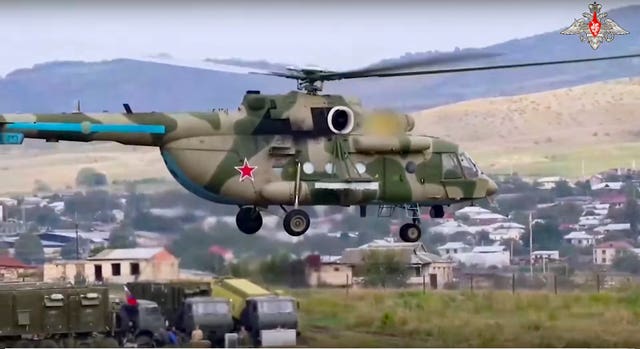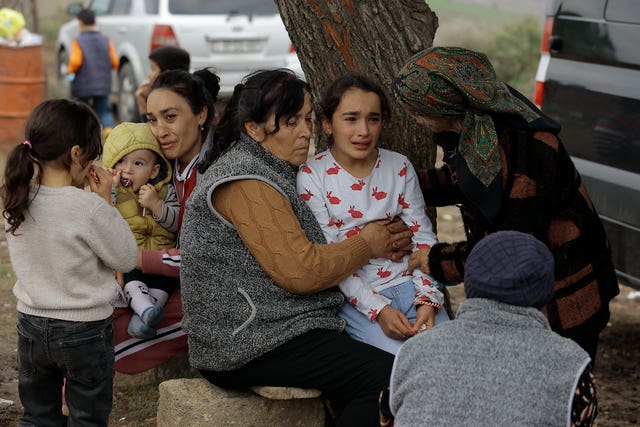The separatist government of Nagorno-Karabakh has announced that it will dismantle itself and the unrecognised republic will cease to exist by January 1 2024.
Armenian officials said more than half of the population has already fled.
The move comes after Azerbaijan carried out a lightning offensive to reclaim full control over its breakaway region, demanding that Armenian troops in Nagorno-Karabakh lay down their weapons and urging the separatist government to disband.
A decree to that effect was signed by the region’s separatist President Samvel Shakhramanyan.
The document cited an agreement reached last week to end the fighting under which Azerbaijan will allow the “free, voluntary and unhindered movement” of Nagorno-Karbakh residents and disarm troops in Armenia in exchange.
Nagorno-Karabakh is a region of Azerbaijan that came under the control of ethnic Armenian forces, backed by the Armenian military, in separatist fighting that ended in 1994.

During a six-week war in 2020, Azerbaijan took back parts of Nagorno-Karabakh along with surrounding territory that Armenian forces had claimed during the earlier conflict.
In December, Azerbaijan imposed a blockade of the only road connecting Nagorno-Karabakh with Armenia, alleging that the Armenian government was using the road for mineral extraction and illicit weapons shipments to the region’s separatist forces.
Armenia charged that the closure denied basic food and fuel supplies to Nagorno-Karabakh’s approximately 120,000 people.
Azerbaijan rejected the accusation, arguing the region could receive supplies through the Azerbaijani city of Aghdam – a solution long resisted by Nagorno-Karabakh authorities, who called it a strategy for Azerbaijan to gain control of the region.
After the blockade was lifted following the offensive and a ceasefire agreement brokered by Russian peacekeepers, more than half of Nagorno-Karabakh’s population – 65,000 people – have fled to Armenia.

The massive exodus began on Sunday evening, and the only road linking Nagorno-Karabakh to Armenia quickly filled up with cars that created a huge traffic jam.
On Monday night, a fuel reservoir exploded at a filling station where people seeking to leave were lining up for petrol that had been in short supply due to the blockade. At least 68 people were killed and nearly 300 injured, with over 100 more still considered missing.
It is not immediately clear if any of the ethnic Armenians that have populated the region will remain there.
Mr Shakhramayan’s decree on Thursday urged Nagorno-Karabakh’s population – including those who left – “to familiarise themselves with the conditions of reintegration offered by the Republic of Azerbaijan, in order to then make an individual decision about the possibility of staying in (or returning to) Nagorno-Karabakh”.
On Thursday, Azerbaijani authorities charged Ruben Vardanyan, the former head of Nagorno-Karabakh’s separatist government who was arrested a day earlier, with financing terrorism, creating illegal armed formations and illegally crossing a state border.
Azerbaijani officials said Vardanyan, a billionaire who made his fortune in Russia, was detained as he was trying to cross into Armenia from the breakaway region along with thousands of others. He was escorted to Azerbaijan’s capital, Baku.
His arrest appears to indicate Azerbaijan’s intention to quickly enforce its grip on the region.
Vardanyan moved to Nagorno-Karabakh in 2022 and served as the head the regional government for several months before stepping down earlier this year.




Comments: Our rules
We want our comments to be a lively and valuable part of our community - a place where readers can debate and engage with the most important local issues. The ability to comment on our stories is a privilege, not a right, however, and that privilege may be withdrawn if it is abused or misused.
Please report any comments that break our rules.
Read the rules here